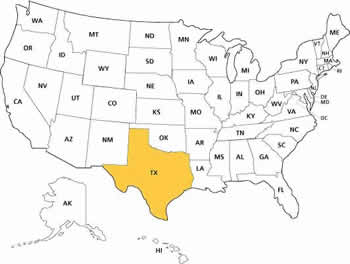Expert Slide and Photo Scanning Since 2002.
4,000 ppi Scanning and Premium Photoshop
Editing On Every Scan. Still 39¢ most slides.
We also can make PRINTS from your Slides.
www.Slides.Pics
Texas 35mm Slide, Photo & Film Scanning

All Scanning companies will NOT give you the same results, Click Here.
While we do NOT have a local office in Texas, Affordable Scanning Services LLC has provided services for customers all over Texas, including Houston, San Antonio, Dallas, Austin, Fort Worth, El Paso, Arlington, Corpus Christi, Plano, Garland, and the United States and Canada since 2002. In all that time we have worked with multiple people, university's and businesses with many different needs and end results. Our customers are very important to us and they are our best salespeople.
Some of the newer scanning companies, unable to compete with our services, have resorted to sending their customer's 35mm slides, photos and films to India or other third world countries. That is bad enough but what we think is really underhanded, is that they are not up front about this minor little detail. Most of their customers have no idea that their family photo collction is being loaded into a cargo plane and flown 7,000 miles over the ocean to India. And that may be the safest part of the trip.
At Affordable 35mm Slide Scanning, your job does not leave our premises,in Waupun Wisconsin, until we return ship to you. We treat your precious photo collection just like it was our own and I can tell you for certain, that we would never be sending our heirloom family photos to a thirdworld sweatshop in order to save a few dollars.
All jobs are worked by 100% USA citizens who are talented and skillful and they really are artists at heart. They work your family photos just like they were working their very own photos. We realize that this is the only time that you are going to be converting your slides and photos to digital and we are going to make it a good Experience for you.
Texas History
"Texas boasts that "Six Flags" have flown over its soil: the national flags of Spain, the Fleur-de-lis of France, Mexico, the Republic of Texas, the Confederate States of America, and the United States of America.
American Indian tribes who once lived inside the boundaries of present-day Texas include Apache, Atakapan, Bidai, Caddo, Comanche, Cherokee, Kiowa, Tonkawa, Wichita, Hueco and the Karankawa of Galveston. Currently, there are three federally recognized Native American tribes which reside in Texas: the Alabama-Coushatta Tribe of Texas, the Kickapoo Traditional Tribe of Texas, and the Ysleta Del Sur Pueblo of Texas.
Alonso Álvarez de Pineda, creator of the first map of the northern Gulf Coast, made the first documented European citing of Texas in 1519. On 6 November 1528, shipwrecked Spanish conquistador Álvar Núñez Cabeza de Vaca became the first known European in Texas. Texas was immediately claimed by Spain as part of New Spain. but was not settled immediately. In 1685 La Salle established the first European community in Texas, the French colony of Fort Saint Louis. The colony, located along Matagorda Bay, lasted only four years before succumbing to harsh conditions and hostile natives.
Due to the perceived French encroachment, Spain established its first presence in Texas in 1691 constructing of several missions in East Texas.The missions failed quickly, and Spain did not resettle Texas until two decades had passed. Spain returned to East Texas in 1716, establishing several missions and a presidio to maintain a buffer between Mexico and the French territory of Louisiana. Two years later, the first civilian settlement in Texas, San Antonio, was established as a way station between the missions and the nearest existing Spanish settlement. San Antonio quickly became a target for raids by the Lipan Apache. In 1749, the Spanish signed a peace treaty with the Apache, which angered the enemies of the Apache and resulted in raids by the Comanche, Tonkawa, and Hasinai tribes. Fear of Indian attacks and remoteness from the rest of the kingdom discouraged settlers from moving to Texas, and it remained one of the least populated provinces of New Spain.
The Comanche signed a treaty with Spain in 1785 and later assisted in defeating the Lipan Apache and Karankawa tribes which had continued to cause difficulties for Spanish settlers. An increase in the number of missions in the province allowed for a peaceful conversion of other tribes, and by the end of the 1700s only a few of the hunting and gathering tribes had not been Christianized.
Although Spain also held Louisiana for several years, in 1799 it ceded the neighboring territory back to France. Napoleon selling of Louisiana to the United States the following year, let to a border dispute of Texas. U.S. President Thomas Jefferson insisted that the purchase included all land to the east of the Rocky Mountains and to the north of the Rio Grande. The dispute was resolved in 1819, with the signing of the Adams-Onís Treaty recognizing the Sabine River as Texas's eastern boundary. Two years later, the state became a province of Mexico after the Mexican War of Independence.
Stephen F. AustinMoses Austin was the first Anglo American to receive permission to settle in Texas, but died before he could bring settlers to Texas. His son, Stephen F. Austin, continued his father's work. In 1821, Texas became part of the newly independent Republic of Mexico and, in 1824, became the northern section of Coahuila y Tejas. Spain's policy of allowing only full-blooded Spaniards to settle Texas also ended with Mexico's independence. On 3 January 1823, Stephen F. Austin began a colony of 297 Anglo-American families known as the "Old Three Hundred" along the Brazos River, after Austin was authorized to do so by Governor Antonio María Martínez and then successive Mexican officials as Mexico went through tumultuous political regime changes. Austin soon organized even more groups of immigrants, with authorization from the Mexican government. By 1830, the 30,000 Anglo settlers in Texas outnumbered Tejanos two to one.
Main articles: Texas Revolution and Republic of Texas
The Convention of 1832 and the Convention of 1833 were responses to rising unrest at policies of the Mexican government, which included ending duty free imports from the United States and the threat of losing a special allowance for slavery in the state. Slavery was abolished in Mexico after its independence.In 1835, Antonio López de Santa Anna, President of Mexico, proclaimed a unified constitution for all Mexican territories, including Texas. The new Constitution ended the republic and the federation, imposed a central style of government with power concentrated in the President, and turned states into provinces with governors appointed from Mexico City. Some states around Mexico rebelled against this imposition, including Chihuahua, Zacatecas and Yucatan. Texans were also irritated by other policies including the forcible disarmament of Texan settlers, and the expulsion of immigrants and legal landowners originally from the United States. Centralista forces' suppression of dissidents in Zacatecas also inspired fear of the Mexican government.
Republic of Texas. The present-day outlines of the U.S. states are superimposed on the boundaries of 1836–1845On 2 March 1836, the Convention of 1836 signed a Declaration of Independence. On 21 April 1836, the Texans—led by General Sam Houston—won their independence at the Battle of San Jacinto. Santa Anna's capture led to the Treaties of Velasco, which gave Texas firm boundaries; Mexico repudiated the treaties, considered Texas a breakaway province, and vowed to reconquer it. Later in 1836, the Texans adopted a constitution that formally legalized slavery. The Republic of Texas included the area of the present state of Texas, and additional unoccupied territory to the west and northwest.
Most Texans wanted their Republic to be annexed into the United States because of the Republic's defensive and financial difficulties. Events such as the Dawson Massacre and two recaptures of Béxar in Texas of 1842 added momentum to the desire for statehood. However, strong Northern opposition to adding another slave state blocked Texas' admission until pro-annexation James K. Polk won the election of 1844. On 29 December 1845, Texas was admitted to the U.S. as a constituent state of the Union. The Mexican–American War followed, with decisive victories by the U.S. Post war Texas grew rapidly as migrants poured into the cotton lands of the state.
Just before the American Civil War, elected delegates met in convention and authorized secession from the U.S. on 1 February 1861. Texas voters later approved the measure in referendum, and the state was accepted as a charter member by the provisional government of the Confederate States of America on 1 March 1861. Partly due to its distance from the front lines of the war, a major role for Texas was to supply men, especially calvary, for Confederate forces, many veterans of the Mexican–American War. Texan regiments fought in every major battle throughout the war. Texas was a "supply state" for the Confederate forces until mid-1863, when the Union capture of the Mississippi River made large movements of men or cattle impossible. The last battle of the Civil War was fought in Texas, at Palmito Ranch, on 12 May 1865, well after Lee's surrender on 9 April 1865 at Appomattox Court House in Virginia.
Texas descended into near-anarchy during the two months between the surrender of the Army of Northern Virginia and the assumption of authority by Union General Gordon Granger, as Confederate forces demobilized or disbanded and government property passed into private hands through distribution or plunder. Juneteenth commemorates the announcement of the Emancipation Proclamation on 19 June 1865 in Galveston by General Gordon Granger; nearly 1-1/2 years after the original announcement of 1 January 1863. President Johnson, on 20 August 1866, declared that civilian government had been restored to Texas.[50] On 30 March 1870, despite not meeting all requirements for readmission, the Congress readmitted Texas into the Union.
The first major oil well in Texas was Spindletop, a little hill south of Beaumont, on the morning of 10 January 1901. Other oil fields were later discovered nearby in East Texas, West Texas, and under the Gulf of Mexico. The resulting “Oil Boom” permanently transformed the economy of Texas. Oil production eventually averaged three million barrels of oil per day at its peak in 1972. The economy, which had shown significant progress since the American Civil War, was dealt a double blow by the Great Depression and the Dust Bowl.
From 1950 through the 1960s, Texas modernized and dramatically expanded its system of higher education. Under the leadership of Governor John B. Connally, the state created a long-range plan for higher education, a more rational distribution of resources, and a central state apparatus designed to manage state institutions more efficiently. These changes, helped Texas universities receive federal research funds during the Kennedy and Johnson administrations."
From:
https://en.wikipedia.org/wiki/Texas
About Our Company
Affordable Scanning Services LLC
400 Bittersweet Lane
Waupun, WI 53963
Copyright 2024
Everyone needs to fill in and submit an order form online. This includes those who want to personally DROP OFF. There is a lot of information you need to read on the order form pages.
Please click here.
Get in Touch
After Hours, you will get a faster response by using Email. Please click the link above. We answer Email at all hours. Telephone messages are responded to during business hours.

 Home
Home Order Forms
Order Forms